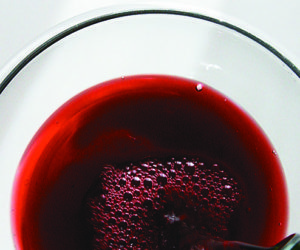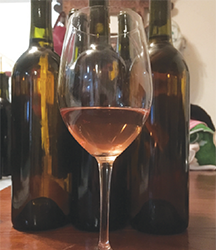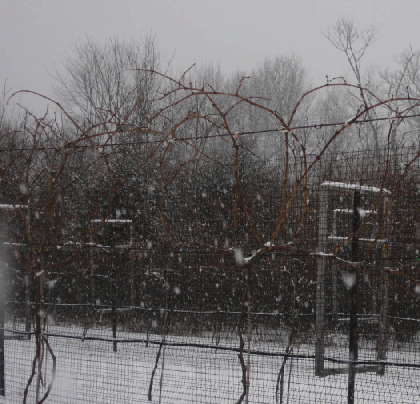
Grapevine Dormancy
The beginning of the calendar year in my Hyde Park, New York home vineyard is when the vines are in dormancy. This is a period of time when the grapevine rests and reserves its stored energy for the upcoming growing season. After harvest, the grapevine’s focus turns to expanding its root system and starting to harden off its canes for a long winter’s nap.
After harvest, make sure to give your vines a heavy watering. I installed a soaker hose along my lower trellis wire to provide a slow but deep watering to my home vineyard rows. If Mother Nature provides water, all the better. The heavy watering will flush the roots of any built up salts and also aid in the rapid root growth. This well-deserved drink of water will also help in moving the stores of nutrients through the vines and into the canes; allowing them to harden off for winter. This will make them available and ready for fruit production next year. This is very important where I live in the Hudson Valley where it is not unusual to experience some extremely cold winters.
Pruning
The next phase after dormancy, in the early spring, is pruning. This process is 10% science and 90% art. Some varieties perform better on spur pruning versus cane pruning, but I believe much of this is site specific. Spur pruning is simpler; the cordon arms, however, are more subject to cold damage, so for this reason, I cane prune all my vines. It is a significant amount of effort as each vine is completely different and requires its own design. I employ a simple three-wire trellis. This year, with the data from bud damage assessment, I had a bit more science to guide my pruning. The outcome of my assessment was that each variety experienced 10% or less primary bud damage. This is normal over any winter and does not require any change in your pruning approach.
In late winter/early spring I prune my vines in the double Guyot method. I prune as late as possible as a means of trying to delay bud break, as I always have to contend with the possibility of a spring frost. Starting from the head of the vine, pick a cane from last year’s growth that is approximately pencil thickness and has grown up near the top of the trellis, receiving a maximum amount of light exposure. These canes will be most fruitful. Find one to go to the left and one to go to the right. Try to pick canes coming from just below the fruiting wire. If you have two trunks, try to have one coming from each trunk. Also think of next year’s vintage; you need to leave a couple of renewal spurs. In my vineyard I try to have my renewal spurs closest to the head of the vine and the next cane to become this year’s fruiting wood. The fruiting cane is pruned in length to match up with the fruiting cane coming from the adjacent vine. I wrap it and tie its end to the fruiting wire. Remember, this is the goal; the scientific part, so to speak. Every vine is different and has a “mind” of its own. The artistic part is viewing and then shaping each vine to try to create the picture sought after.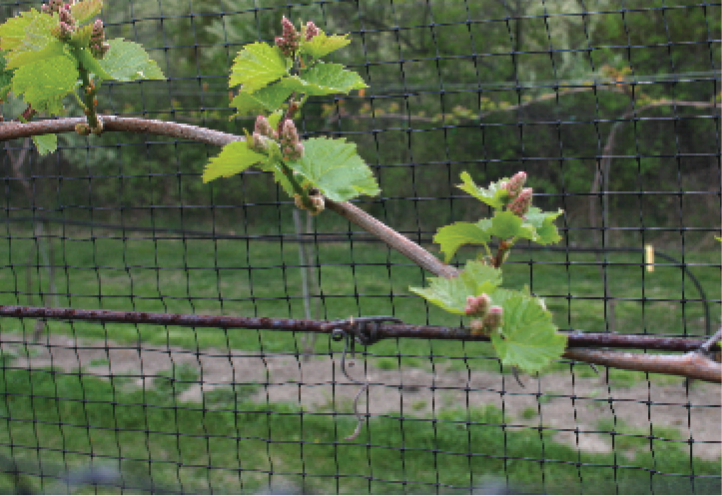
Bud Break
Bud break for the bulk of my vines in 2014 was around May 10th. Due to a very cold winter and relatively cold spring, bud break seemed to be about two weeks later than normal. Along with the colder winters, a shorter growing season is something we have to contend with in cold-climate growing.
Bud break is an important milestone in the vineyard. It gives you your first indication of what your growing year may be like. There is nothing more exciting than your first glimpse at the infantile grape clusters that emerge, cradled by their new leaves and shoots. At this point, I felt that my home vineyard was on the right track. It made it through a record cold winter with flying colors and has historically produced fruit that has made some very palatable wines.
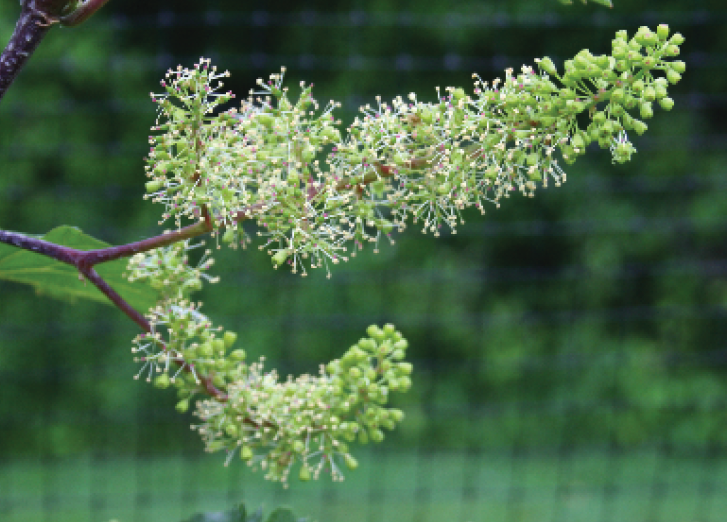
Fruit Set Sizing
After flowering comes fruit set. Even though I was concerned that we were receiving a considerable amount of rain during the flowering period, and how those heavy rains could have potentially negatively impacted pollination and fruit set, grapevines are very resilient. My vineyard had a very even fruit set this year, which came in late June, and the grapes began what is known as sizing. Sizing is an amazing period of very quick berry growth. You can see a significant difference daily! The first month or so is a period of rapid cell division followed by cell expansion. This is also a period to make sure you are on track with your spray schedule and that the clusters are well penetrated to protect them from mildews and other fungal invaders that can preclude you from ending up with clean fruit for winemaking. In the end, that’s what vineyard management is all about.
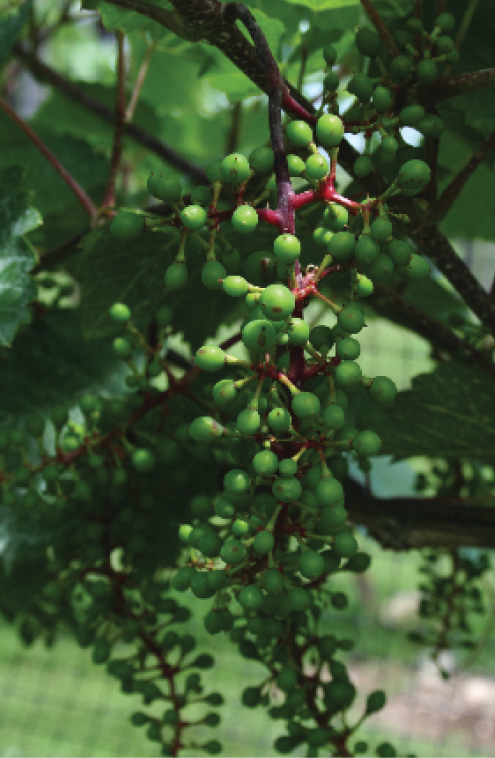
Flowering
Flowering is another milestone in the vineyard. In 2014, however, rain showers arrived at the same time (early June), which was concerning. The concern with rain at this point is that this is a critical period of pollination and fruit set for the grapes. You hope for warm, dry, and calm conditions for this process to maximize the fruit set. Rain can have a detrimental affect on this process. So here is another way that Mother Nature can make or break your vintage for the year.
Most grape varieties have both male and female reproductive elements in each flower, which means that bees aren’t required for pollination. Everything in grape flowers are in such close proximity, and there are so many flowers, that the likelihood of pollination is quite high. Grape flowers are very small, but can be very aromatic. What is very interesting is that each variety has its own bouquet. At this point, I can walk down my vineyard rows and just from the scent of the flowers tell which variety I am walking by!
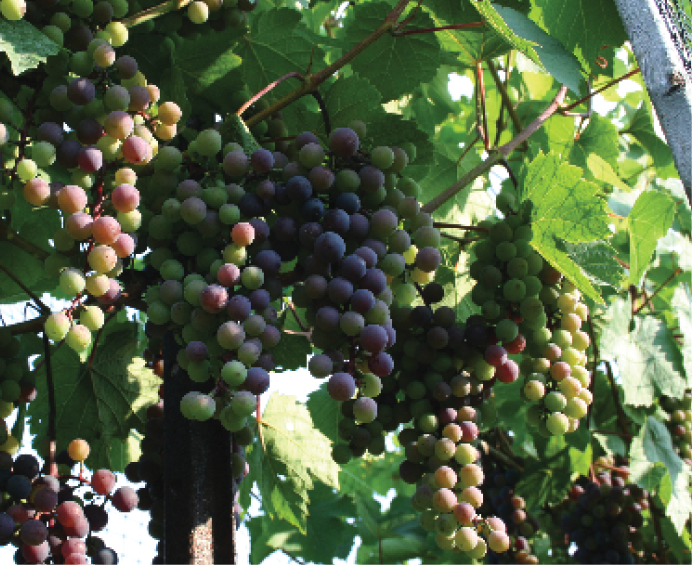
Fruit Maturation
Early September here in my Hudson Valley home vineyard begins a period of maturation for my various varieties of grapes. At the start of veraison I perform quite a bit of summer maintenance including shoot tying, hedging, and leaf pulling to ensure proper air and sun exposure to the individual grape clusters. The level of this work is dependent on the individual variety’s vigor and the site specifics. I, for instance, only leaf pull on the east side of my grape rows — they run north to south — to limit the potential of sun burning the grapes. Additionally, I only have had to hedge two of my seven grape varieties. Leaf pull is also at a minimum for these five varieties.
This is the time I also begin testing the °Brix, pH, and titratable acidity (TA)to monitor the development of the grapes towards optimum ripeness for harvest. Additionally, I taste the grape and look at the color of the seeds. Although the analytical measurements are important, I find that the grape flavor and evolution of seed color from green to dark brown gives me the best indication of when to harvest. Pretty Old World, right?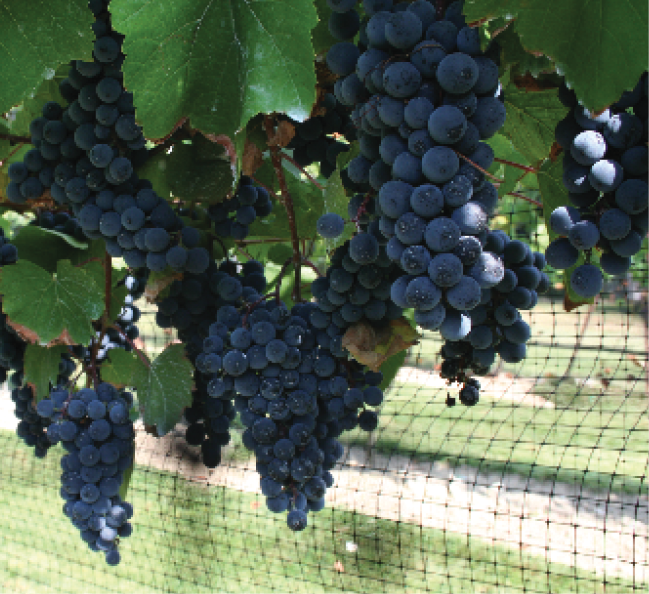
Veraison
Veraison, or fruit coloring, arrived for my De Chaunac grapes in early August. My other red wine varieties started to develop color later in the month. Veraison is a very exciting time. It illustrates that your vines are doing the work necessary and focusing their attention on the ripening of their fruit. We would like to think that the vines are doing this to reward the vineyard manager, the winemaker, and eventually the wine drinker for all their efforts. Sorry to burst your bubble, but they work to ripen their fruit for a very self-serving reason. They ripen that fruit with the hope that a bird or other animal may be attracted to it, eat it, and eventually pass the seeds to the ground to grow more vines. We winemakers, however, would prefer to keep that fruit in order to do our best at making the highest quality wine we can derive from the current vintage.
With this in mind, veraison also brings me a feeling of angst to counter the excitement. My angst is derived from a past experience with birds doing what they were supposed to do and picking my vines clean of the fruit. Luckily that was an early, non-production year for my vines. Although unnerving, it gave me a foreshadowing of what was in store for my hard work if I let the birds have their way. So my bird friends that kept the bugs in check during the growing season later become my nemesis in their quest for ripe fruit. Therefore veraison is the time to cover the vines with bird netting!
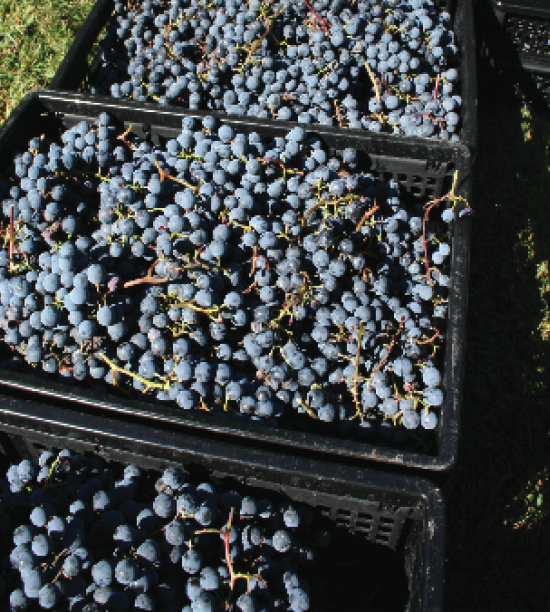
Harvest
And finally, in early October, harvest arrived! This is by far the most fulfilling event for any grape grower. After a year including dormancy, pruning, bud break, flowering, fruit set, vine balancing, veraison, and vine maintenance, the optimum time to pick the fruit has arrived!
For me, harvest is a time when friends and family come together to bring the grapes in from the field. Along the way, there is a building sense of excitement as everyone checks in and asks, “when do you need us there for harvest?” At my vineyard, harvest is, in essence, a family holiday. One that is put on the calendar with great anticipation. This point in the year cements a bond with the people I love that carries from year to year — and hopefully from generation to generation.
Harvest is also a time that signals another change in a winegrowers year: A change of guard, so to speak. It is the time when the home winegrower switches hats to the home winemaker.



